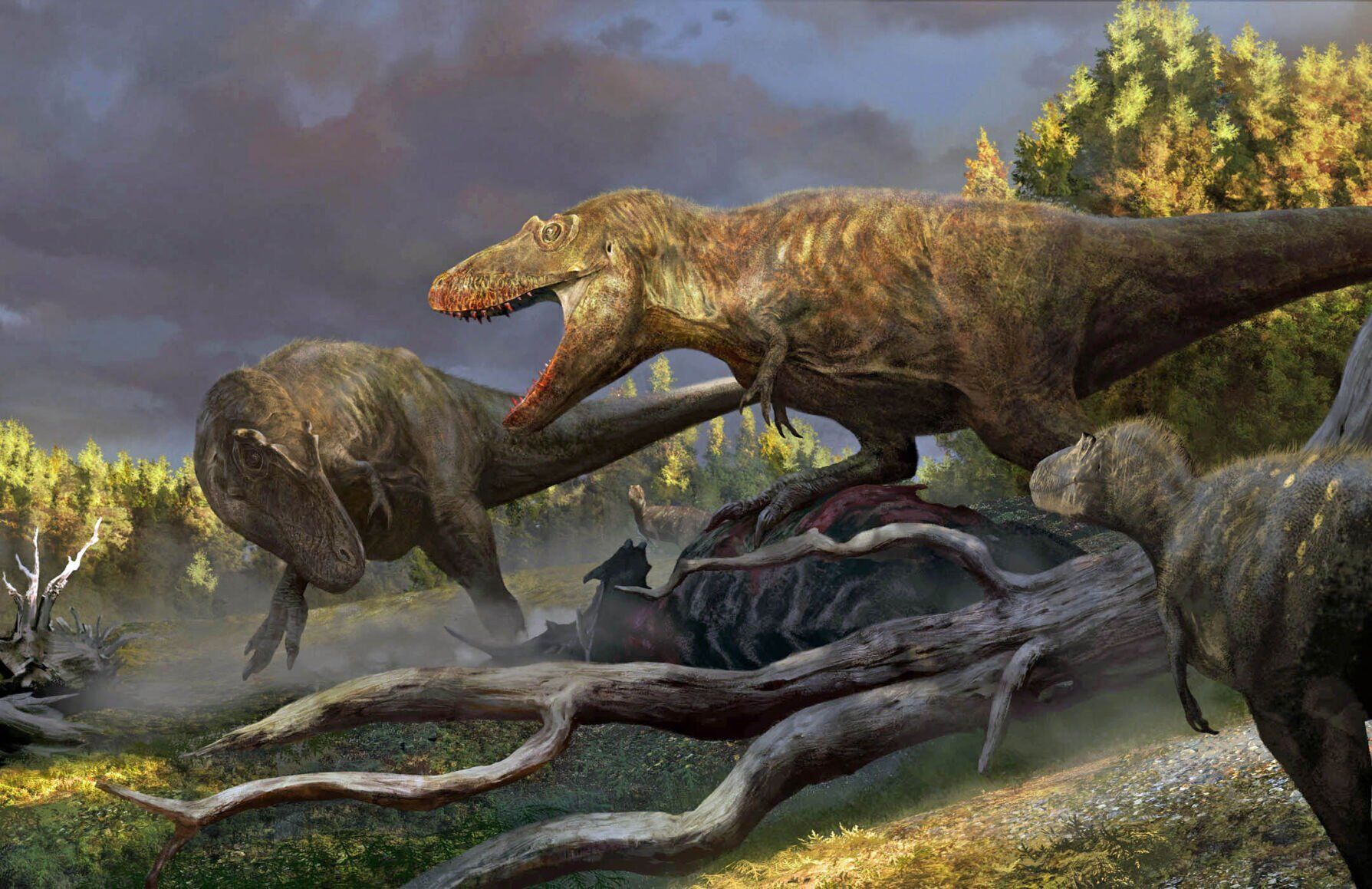Scientists say they’ve found T. rex’s early ancestor in northeast Montana
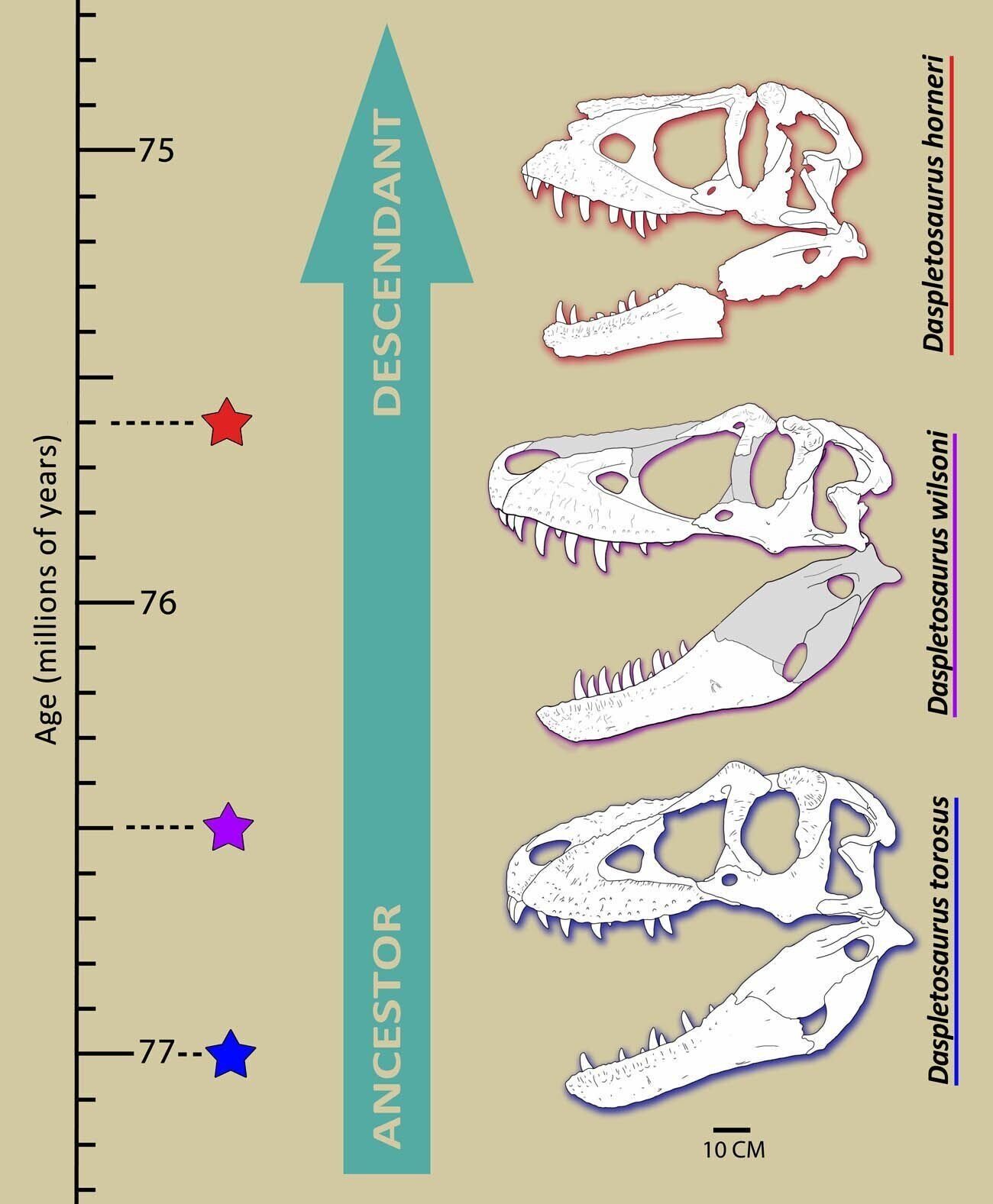
Badlands Dinosaur Museum
The new species (Daspletosaurus wilsoni, 76.5 Ma) is transitional in form and age between D. torosus (77 Ma) and D. horneri (75.6 Ma). This suggests that Daspletosaurus underwent linear evolution - where one form evolves into the next without splitting or branching.
Northeast Montana has once again produced an unusual fossil find — a new ancestor of the formidable Tyrannosaurus rex.
Daspletosaurus wilsoni — Wilson’s frightful reptile — is believed to link two other Daspletosaurus dinosaurs, according to a recently published research paper by Montana State University student Elias Warshaw and Badlands Dinosaur Museum curator Denver Fowler, an MSU grad.
“What we’re saying in the paper is that the three species of Daspletosaurus that we have right now — which is Daspletosaurus torosus, which is the earliest one; Daspletosaurus wilsoni, which is what we just named and is the middle one; and Daspletosaurus horneri, which is the youngest one — we’re saying that instead of representing three different branches off of the Tyrannosaur family tree, we think that they represent an ancestor descendant sequence,” Warshaw explained.
Long ago
The dinosaurs span an evolutionary lineage stretching from around 77 to 75 million years ago.
“The new species displays a mix of features found in more primitive Tyrannosaurs from older rocks, like a prominent set of horns around the eye, as well as features otherwise known from later members of this group (including T. rex), like a tall eye socket and expanded air-pockets in the skull,” the museum explained in a press release. “In this way, D. wilsoni is a ‘halfway point’ or ‘missing link’ between older and younger Tyrannosaur species.”
“When you get two species alive at the same time, you know they had a branching event at some time in their past,” Fowler said. “Like any species you see today, such as lions and tigers … we know they must have split at some point in the past because they are both alive at the same time.
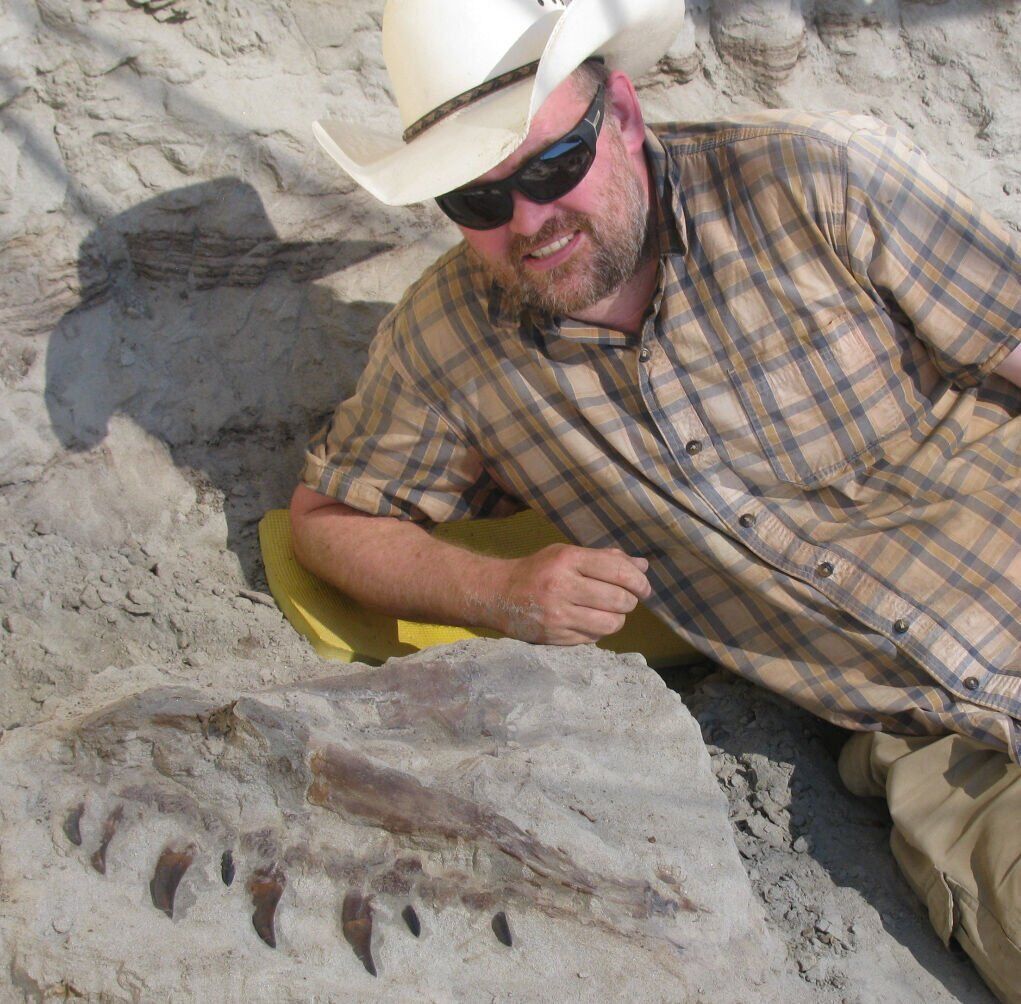
Badlands Dinosaur Museum
Denver Fowler, museum curator, poses with the upper jaw as found in the quarry.
“So these Tyrannosaurs, every time we find one that’s intermediate in age … the evidence is we don’t see any branching in this particular group,” he added. “Because we don’t see two different species alive at the same time.”
“The new study supports the addition of Tyrannosaurs to a growing list of dinosaurs (including horned and duckbilled dinosaurs) for which anagenesis (linear evolution) has been proposed,” the museum explained. “This seems to suggest that linear evolution is more widespread in dinosaurs, with branching evolution being less frequent than previously thought.”
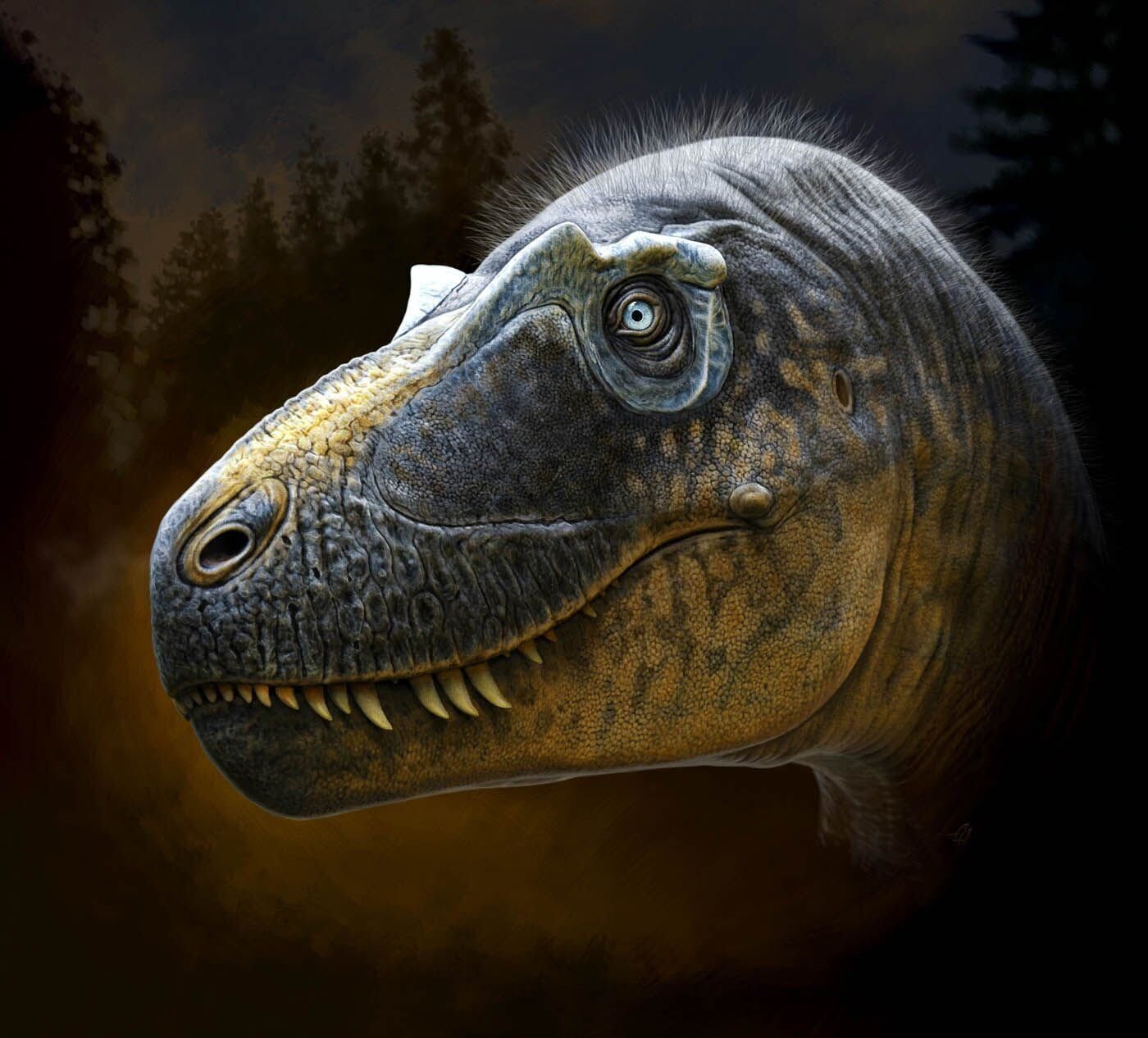
Image © Andrey Atuchin & Badlands Dinosaur Museum
The new species is recognized by the unique arrangement of small hornlets around the eye.
Anagenesis
When asked about anagenesis, BLM paleontologist Greg Liggett noted evolution is a complex process. A good example of anagenesis he pointed to is polar bears, which are direct descendants of brown bears yet adapted and evolved over time to live in a unique environment.
“You can look at a brown bear and a polar bear and see that they look pretty different, such that we recognize them as different species,” Liggett said in an email. “However, they remain genetically close enough to sometimes hybridize, that is mate and produce viable offspring.
“The trouble with the fossil record is it is hard to have enough specimens over geologic time to show a stepwise set of changes in a population,” he added. “This is why paleontologists usually communicate about cladogenesis, or the distinct splitting into separate species. You find fossil A and it is similar but different than fossil B, they are distinct and different but related species. That is usually the best we can say about fossil taxa separated by millions of years.
“One of the criticisms of suggesting broader anagenesis in the fossil record is that it is not testable, and so not scientific,” Liggett said. “In the ‘old’ days, paleontologists would publish evolutionary trees of species through time showing that species X lived 50 million years ago, and that species gave rise to species Y 40 million years ago, etc. However, there is no way to test this hypothesis of ancestry and descent. So, I think the authors would say that they are showing progression of characters over a relatively short amount of geologic time, and within closely related taxa suggests anagenesis.”
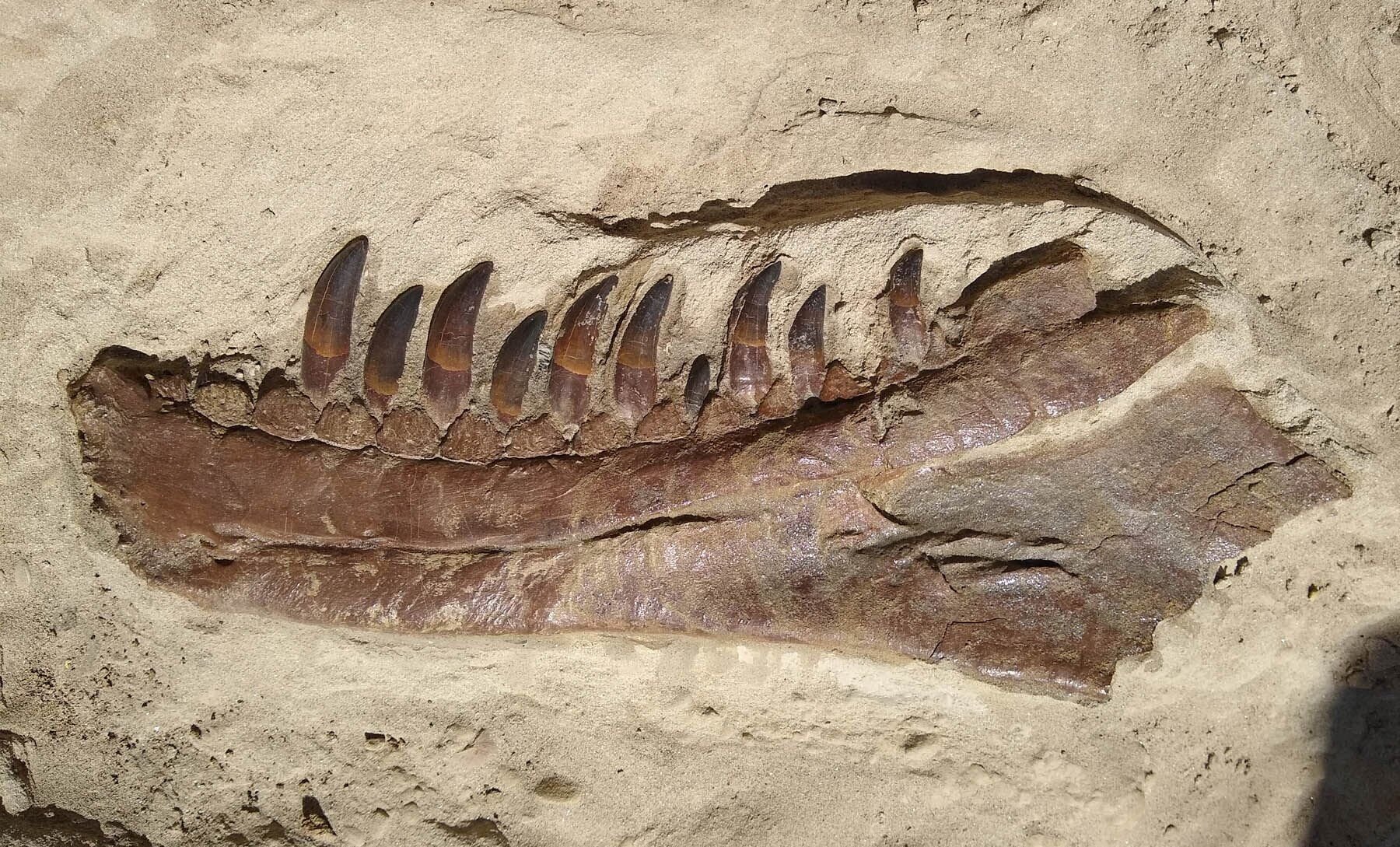
Badlands Dinosaur Museum
The spectacular lower jaw of the skull had most of the teeth preserved in their sockets
Far away
This most recent fossil was uncovered on Bureau of Land Management property in Valley County, not far from where the museum airlifted out another 76-million-year-old Tyrannosaur fossil in 2021.
In 2017, museum crew member Jack Wilson found a small, flat piece of bone protruding from the base of a cliff in a geological deposition known as the Judith River Formation.
“This distinctive flat bone was the middle part of the nostril of a Tyrannosaur,” the museum noted.
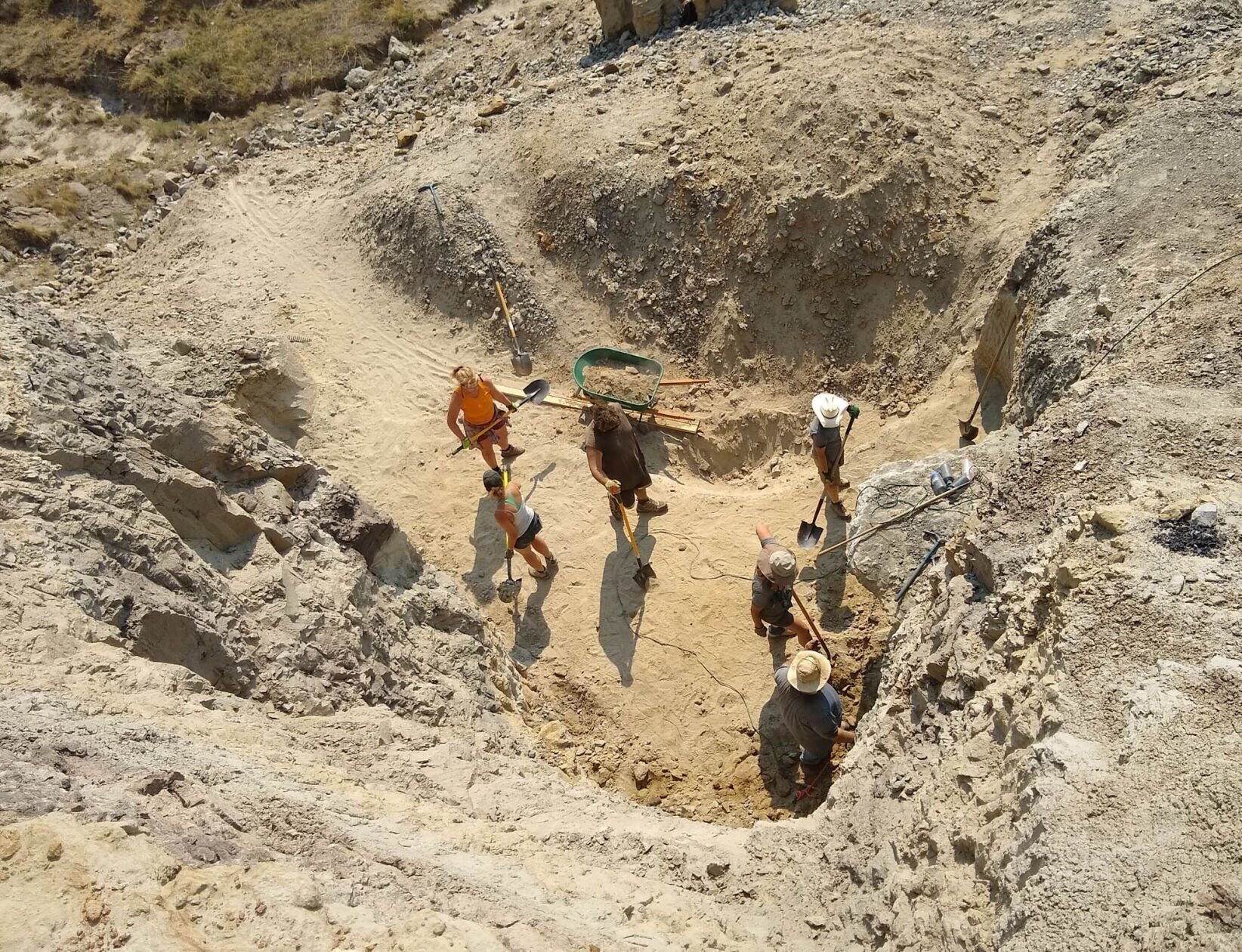
Badlands Dinosaur Museum
Twenty-five feet of rock had to be removed from over the top of the skeleton.
Because of all the rock that had to be removed to reach the fossil — about 25 feet — it was nicknamed Sisyphus. Sisyphus is the mythological Greek character doomed to roll a large rock uphill for eternity as punishment for cheating death. Over two seasons the fossil’s rock overburden was removed with the steady pulse of a jackhammer.
The museum found four Tyrannosaur sites in the area in 2017. The discoveries have revealed three partial skeletons and what appears to be a mostly complete articulated skeleton, meaning it hasn’t been scattered.
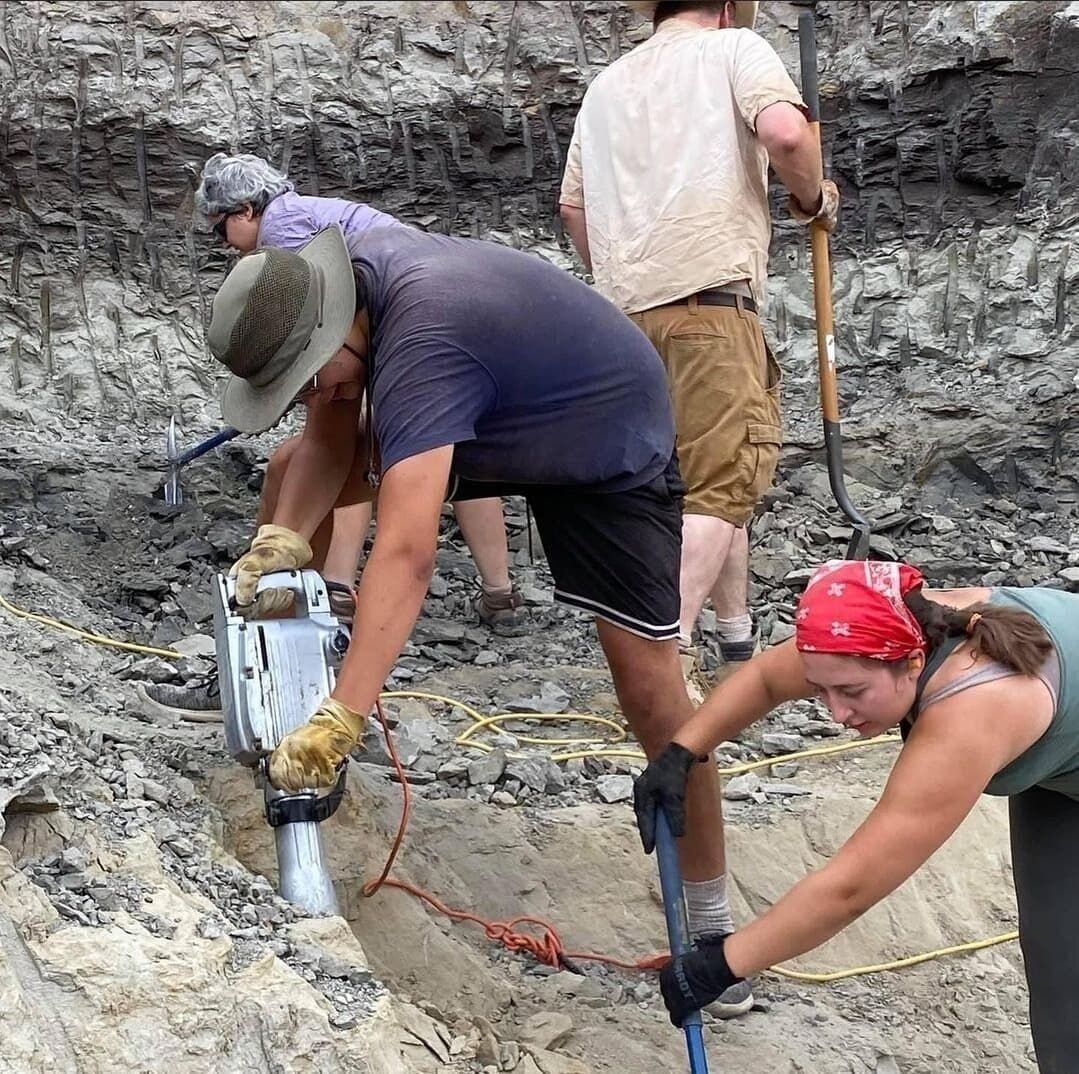
Badlands Dinosaur Museum
Elías Warshaw uses a jackhammer to remove overburden at the Daspletosaurus wilsoni quarry in northeast Montana's Valley County.
Big bruiser
When alive, the Daspletosaurus wilsoni would have stretched about 30 feet, large for its time, Warshaw said. Its skull alone is more than 3 feet long. Its age at death has yet to be determined, but the scientists are guessing by the numerous healed scratches and bite marks that it was an adult.
“This thing has been in plenty of scrapes before it died,” Fowler said.
Over its eyes the dinosaur had small spiked hornlets. Although some scientists speculate these may have been for head-butting fights, Warshaw and Fowler think it more likely they were simply for display, allowing individuals to distinguish one another. Both males and females had the hornlets.
To age the dinosaur, the scientists will have to cut the head of a rib bone off, revealing growth sections. To more specifically identify the time the dinosaur lived, they are awaiting testing of volcanic ash deposits.
“What we can say is, this rock was deposited when the Western Interior Seaway was furthest east,” Fowler explained.
The seaway once divided North America, making Montana a tropical, swampy area more akin to today’s Florida. As the water rose and fell, the seaway extended farther east and retracted west, Fowler explained, giving them an idea of when the dinosaur lived.
About 78 million years ago the shoreline was closer to Havre. Between 76 and 77 million years ago it extended farther east to around Hinsdale. About 75 million years ago it hit the foot of where the Rocky Mountains now stand, Fowler explained.
“And we do have some of these ammonites, these marine mollusks, from above the Tyrannosaur, so we can constrain its age a little bit,” he added.
Past dinosaur fossils of note discovered in the region include Leonardo, found in neighboring Phillips County in 2001. The duckbill was so well preserved that its skin was fossilized.

